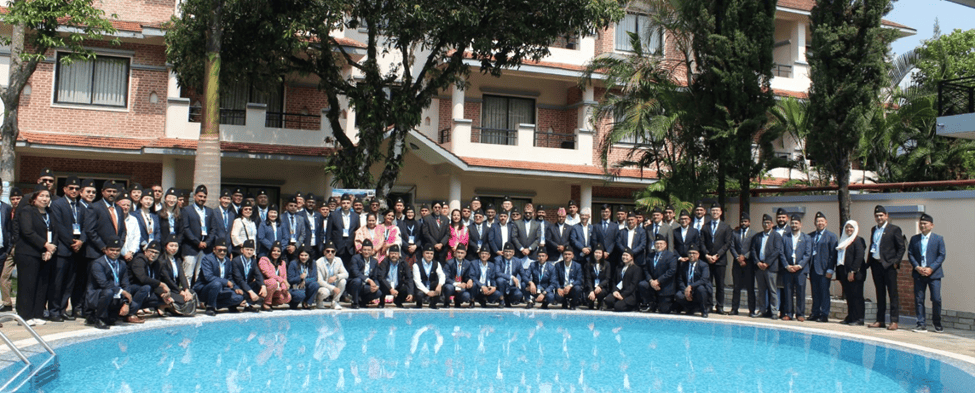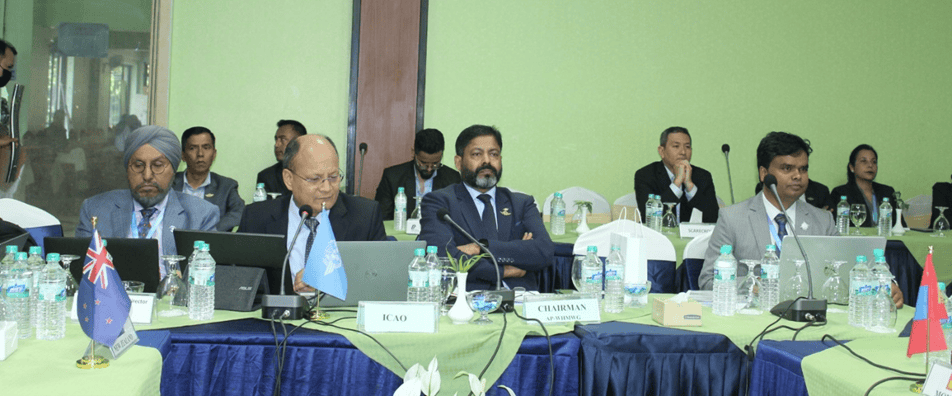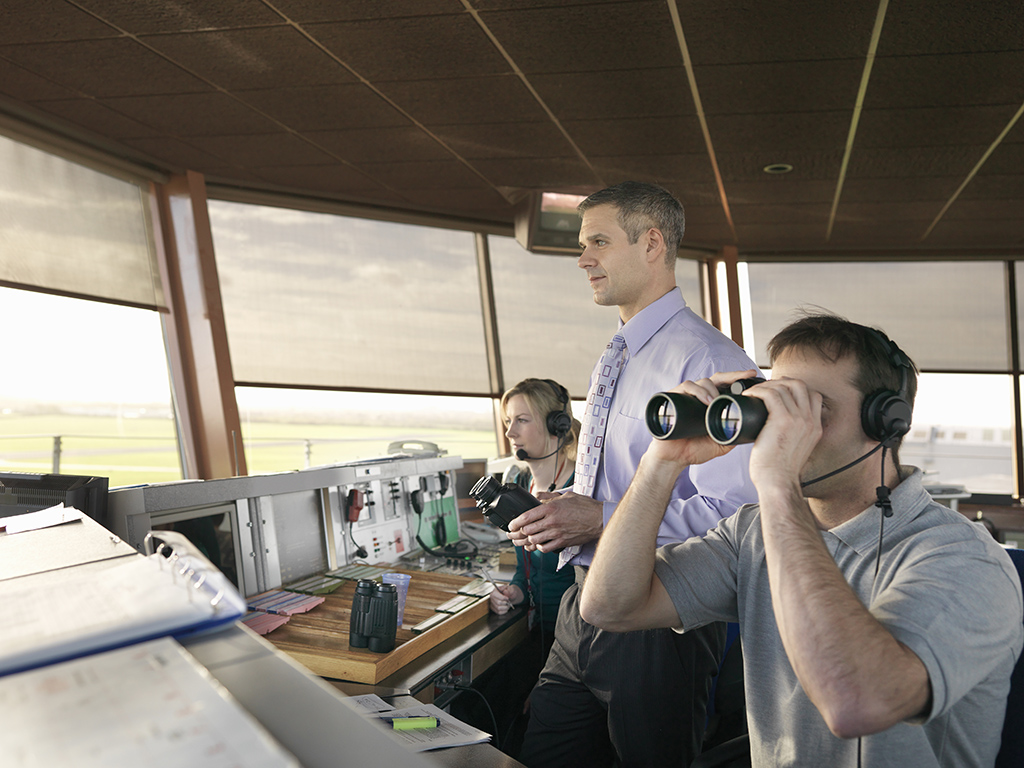Wildlife in and around airfields pose a significant risk to aircraft operations around the world. Each year, numerous collisions occur between aircraft and wildlife, often resulting in aircraft damage. While most of these incidents involve birds, strikes with other animals can also lead to serious consequences. Globally, wildlife strikes are estimated to cost the civil aviation industry about USD 1.2 billion annually—roughly USD 36,000 per strike. These direct costs include flight delays and cancellations, repairs, inspections, maintenance, passenger rebooking, and aircraft write-offs. Beyond the economic impact, the loss of human life in accidents caused by wildlife strikes underscores the critical importance of effective wildlife management at airports.
In May, the Civil Aviation Authority of Nepal (CAAN) hosted the ICAO Asia/Pacific Wildlife Hazard Management Workshop that was held in conjunction with the Seventh Meeting of the Asia/Pacific Wildlife Hazard Management Working Group (AP-WHM WG/7). The event took place at the Hotel Mount Kailash Resort, Lakeside, Pokhara, in Nepal’s scenic tourism hub.
The workshop was formally inaugurated on 5 May 2025 by the Honourable State Minister for Culture, Tourism and Civil Aviation, Mr. Badri Prasad Pandey. In his opening remarks, the Minister expressed heartfelt appreciation to ICAO and all collaborating agencies for organizing this vital initiative in Pokhara. He emphasized the importance of wildlife hazard management in aviation safety, noting the instrumental role played by the ICAO Asia/Pacific Wildlife Hazard Management Working Group in uniting aviation stakeholders to address the growing threat of wildlife, particularly bird strikes.

The inauguration ceremony was chaired by Er. Pradeep Adhikari, Director General of CAAN. Mr. Adhikari reaffirmed Nepal’s commitment to aviation safety, highlighting the country’s unique geographical and ecological challenges. He emphasized CAAN’s alignment with ICAO standards and recommended practices, and its ongoing investments in infrastructure, capacity building, and risk management systems. He stressed the need for a sustainable approach to wildlife hazard management that balances aviation safety with environmental conservation.
Dr. Manjeet Singh, Deputy Regional Director of the ICAO Asia and Pacific Office, welcomed participants and commended CAAN for its generous hosting of the event. He specifically acknowledged the leadership of Mr. Pradeep Adhikari and Mr. Deo Chandra Lal Karn, Deputy Director General of CAAN and Chairperson of the AP-WHM Working Group. Dr. Singh highlighted the persistent threat wildlife poses to aviation safety, including the risks and costs associated with bird strikes. He noted the value of combining workshops with formal meetings, as it bridges policy and practice, enhances technical understanding, and fosters stakeholder engagement.
To further promote awareness and capacity building in wildlife hazard management, a two-day technical workshop was held on 5 and 6 May 2025, in collaboration with the World Birdstrike Association, Australian Aviation Wildlife Hazard Group, and various partner States and aerodrome operators. The workshop featured four technical sessions moderated by leading experts, including: Ms. Lalita Vaswani, President, World Birdstrike Association, Mr. Ashley McAlpine, Advisor and Chair, Australian WHM Committee, Mr. Raman Prasad Emani, Board Member for South Asia, World Birdstrike Association, Ms. Badriyah Noordin, Senior Manager, Safety, ACI Asia-Pacific & Middle East.

The AP-WHM/WG/7 Meeting, held over three days, featured 9 Working Papers, 23 Information Papers, and 5 presentations across 8 agenda items. Chaired by Mr. Deo Chandra Lal Karn, the Meeting marked another milestone in regional collaboration. Under Mr. Karn’s leadership since 2019, the Working Group has achieved significant progress, including, development of regional guidance for implementing Airport Wildlife Hazard Management Programs, establishment of national procedures for recording and reporting wildlife strikes, creation of a generic template for State-level WHM action plans, formulation of the ICAO APAC WHM Go-Team Methodology and Mission Programme Document.
The event welcomed 102 participants from 15 States, including Australia, China, Fiji, India, Indonesia, Lao PDR, Malaysia, Maldives, Mongolia, Nepal, New Zealand, Pakistan, Philippines, Singapore, and Thailand. Representatives from the World Birdstrike Association (WBA) and Airports Council International (ACI) also attended.
The workshop and meeting were made possible through the generous support of primary sponsors Scarecrow Group and Master Mark, along with contributions from over 15 local partners, including Buddha Air, Gen Agritech, Stryker, Yeti Airlines, Himalayan Airlines, Mahavir Shree International Pvt. Ltd., Dravyam, Airlines Operators Association of Nepal, Summit Air, Tara Air, AOC Nepal, and Avia Club Nepal.
This landmark event not only reinforced regional cooperation but also underscored Nepal’s proactive role in advancing aviation safety and sustainable wildlife hazard management across the Asia-Pacific region.

Airport operators are responsible for maintaining a safe operating environment and to carry this out, they must assess the risk of wildlife strikes at their airport. This includes assessment of wildlife species at the airport environment, the available habitat, and complete reporting of all strike incidents that occur at the airport. Based on these assessments, airport operators must develop a Wildlife Hazard Management Plan for reducing strike risk and occurrence. To address the wildlife strikes in civil aviation, Embry-Riddle Aeronautical University, in collaboration with the ICAO and Singapore’s Aerodrome Wildlife Specialist, Mastermark, has designed two professional courses:
- A 3-day course to introduce aviation practitioners to the domain of Airport Wildlife Management.
- A 2-day course to introduce aviation practitioners to the domain of Airport Wildlife Operations.
Both of these courses were designed as per ICAO’s Airport Services Manual (Doc 9137) Part 3, Wildlife Hazard Management, using case studies of the best practices adopted globally.
Airport Wildlife Management Course
This course provides a complete overview of the critical components involved in a wildlife hazard management programme, integrating aviation knowledge and its stakeholders with a broad understanding of wildlife and habitat management. Participants will review developments in technology, dispersal, and data collection techniques and explore a broad spectrum of management strategies and methodologies.
The course is intended for personnel who are responsible for developing and implementing an airport’s wildlife hazard management programme. The course is aimed to enhance the knowledge and skill sets needed to create a successful wildlife hazard management programme. The wildlife issues that are covered involve serious safety concerns for airport operators, and the aviation community itself.
Register now for the new Airport Wildlife Management course.
Airport Wildlife Operations Course
This course includes the basic wildlife identification techniques, with a focus on various bird species, behavior patterns of wildlife, wildlife capture tools, firearms and pyrotechnics safety and operations, Mastermark’s wildlife framework (Aerodrome Wildlife 360), and technology updates. This course also introduces BIRD Tab as an example of a data collection and bird dispersal system and provides an in-depth look into the types of wildlife hazard management techniques used in airports.
This training provides Airport Wildlife Operators with an understanding of how effective tools and techniques can be practical and implementable. Wildlife experts and biologists will illustrate how effective techniques can be implemented for the best results. This “hands-on” course, with training in the classroom and on the airfield, emphasizes the practical application of tools and techniques to assist airports in managing wildlife and employing a practical wildlife hazard management programme. The course is intended for individuals who are responsible for wildlife management at airports.
Register now for the new Airport Wildlife Operations course.
